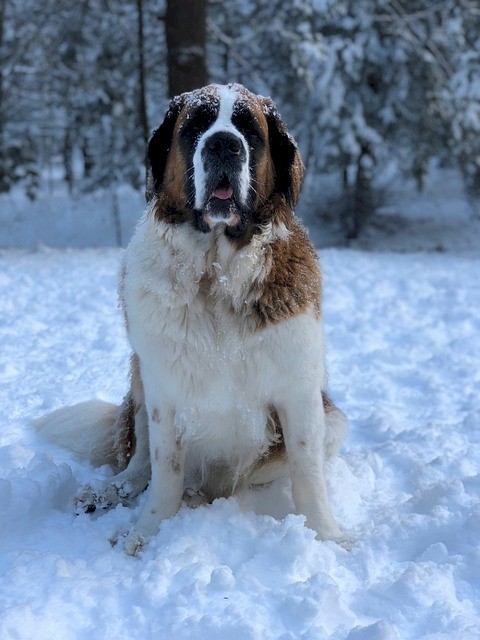St. Bernard: Majestic Alpine Rescuers
The St. Bernard is a magnificent giant breed known for its imposing presence, gentle nature, and remarkable history of alpine rescue work. Below is an in-depth overview of this noble breed:
Origin and History
The St. Bernard's origins can be traced back to the Swiss Alps, particularly the St. Bernard Pass in the Western Alps. Bred by monks of the St. Bernard Hospice for rescue work, they are believed to be descendants of ancient mastiff-type dogs brought to the region by the Romans. The breed's primary purpose was to assist in finding and saving travelers lost or trapped in the treacherous mountain terrain.
Physical Characteristics
St. Bernards are large and powerful dogs with a muscular build. They stand between 25.5 to 27.5 inches at the shoulder, and males typically weigh between 140 to 180 pounds, while females range from 120 to 140 pounds. Their thick, dense coat is typically a combination of white with markings in various shades of red and brown. Their expressive eyes are dark and soulful, and their gentle expression is a hallmark of their temperament.
Temperament
Known for their gentle and friendly disposition, St. Bernards are affectionate and good-natured companions. They are known to be patient and tolerant, especially with children, making them excellent family dogs. Despite their imposing size, they are often referred to as "gentle giants." They are generally social and get along well with other pets.
Intelligence and Trainability
St. Bernards are intelligent dogs, but they can be independent thinkers at times. They respond well to positive reinforcement-based training methods, but they do have a tendency to be a bit stubborn. Early socialization and consistent, patient training are important to ensure they grow into well-mannered adults.
Exercise Needs
While St. Bernards are not overly active dogs, they do benefit from regular exercise to maintain a healthy weight and overall well-being. Daily walks and some playtime in a secure, spacious area are usually sufficient to meet their exercise requirements. However, it's important to avoid overexerting them, especially in hot weather due to their dense coat.
Grooming
Their thick, double coat requires regular grooming to prevent matting and maintain its health and appearance. Brushing a few times a week, more frequently during shedding seasons, is essential. Pay special attention to their ears, as they are prone to infections, and keep their nails trimmed to a comfortable length.
Health Considerations
St. Bernards are generally healthy dogs, but like many large breeds, they can be prone to certain health issues. These may include hip and elbow dysplasia, heart conditions, and issues related to their size, such as bloat. Regular veterinary check-ups and a balanced diet are important for their overall well-being.
Conclusion
The St. Bernard is not only a magnificent and imposing breed but also a loving and devoted companion. Their history as alpine rescuers speaks volumes about their loyalty and willingness to help those in need. With the right care, they can thrive as cherished members of a family, bringing joy and comfort to those fortunate enough to share their lives with them.
